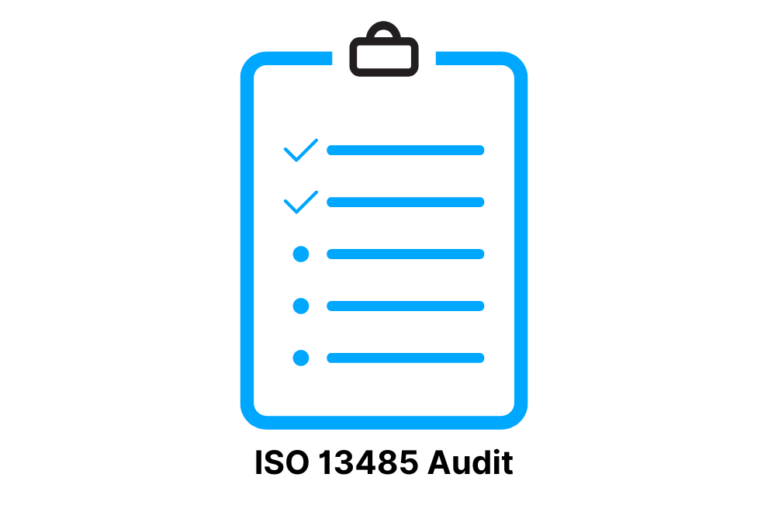Stay Audit-Ready: 21 CFR Part 11 Compliance Checklist
Are you in the pharmaceutical or healthcare industry? If so, you know how important it is to stay audit-ready and comply with FDA regulations.
Specifically, 21 CFR Part 11 compliance is crucial for electronic records and signatures.
In this blog, we have compiled a comprehensive checklist that you can download and follow to ensure your organization meets all the necessary requirements.
From validation to access security, we cover every aspect of compliance in detail.
Additionally, we will introduce you to PERFEQTA, a powerful software solution that goes beyond 21 CFR Part 11 compliance and helps streamline your processes.
Stay tuned till the end for some final thoughts on ensuring continuous compliance efforts.
Downloadable 21 CFR Part 11 Compliance Checklists to Follow
Ensure your organization’s compliance with 21 CFR Part 11 requirements using our downloadable checklists.
These comprehensive checklists cover everything from data management plans to electronic system validation, helping you stay audit-ready and achieve regulatory compliance.
By following these checklists, you can create a secure and compliant environment, ensuring the integrity and authenticity of your electronic records and signatures.
Train your employees on compliance best practices, conduct regular audits, and implement proper security measures.
With these checklists, you’ll have a valuable resource for meeting not only 21 CFR Part 11 requirements but also additional certification and quality management system standards.
Download the checklists today and streamline your compliance efforts.
Validation – Ensuring Compliance with FDA Regulations
Validation is a critical component of ensuring compliance with FDA regulations, particularly 21 CFR Part 11.
It involves documenting and verifying that the systems, software, and processes used for generating and maintaining electronic records meet the requirements set by the FDA.
Through validation, companies can demonstrate their adherence to the regulation and ensure the accuracy, reliability, and security of their electronic records.
Key areas of focus during the validation process include data integrity, security controls, electronic signatures, and audit trails.
By following a comprehensive validation process, organizations can effectively demonstrate compliance with 21 CFR Part 11 and ensure that their electronic records are accurate, reliable, and secure.
It is crucial to establish procedures for validation protocols, testing and verification activities, and result documentation.
Audit Trails – Maintaining Document Traceability
Maintaining document traceability is an essential requirement for adhering to 21 CFR Part 11, and audit trails are instrumental in fulfilling this obligation.
Audit trails provide a comprehensive record of all changes made to electronic records, ensuring their integrity and authenticity.
By enabling and configuring audit trails in relevant systems and applications, organizations can effectively track and monitor any modifications made to electronic records, enhancing traceability.
To ensure proper document traceability, audit trails should capture key information, including the date and time of each action, the user responsible for the action, and a description of the change.
Regular review and analysis of audit trail data are essential to identify any unauthorized or inappropriate alterations to electronic records.
Organizations must establish procedures for securely storing and protecting audit trail data, incorporating backup measures and secure storage solutions.
Incorporating audit trails into your compliance efforts not only demonstrates adherence to 21 CFR Part 11 but also strengthens the overall security and integrity of your electronic records.
By maintaining document traceability through robust audit trails, you can ensure that your records are reliable, accurate, and compliant with FDA regulations.
Systems – Implementing Secure Electronic Systems
Implementing secure electronic systems is crucial to complying with 21 CFR Part 11 regulations.
It is essential to ensure the integrity and security of electronic records and signatures in order to meet regulatory requirements.
This checklist provides guidance on implementing the necessary measures for secure electronic systems, including access controls, user authentication, audit trails, and data encryption.
By following this checklist, companies can demonstrate compliance with FDA regulations and ensure the confidentiality and authenticity of their electronic records.
Regularly reviewing and updating these systems is essential to maintaining compliance and being prepared for audits.
Implementing best practices such as password protection, time-stamped audit trails, and system access controls can further enhance the security of electronic systems.
It is important to stay updated on the latest regulatory requirements and leverage technology solutions that offer additional certification and accreditation.
Companies should also consider using cloud-based systems that offer secure storage and backup options for electronic records.
Implementing a quality management system (QMS) can provide a comprehensive framework for managing electronic records and ensuring compliance with regulatory requirements.
This includes documenting change control processes, record retention policies, and maintaining revision histories for electronic documents.
Additionally, organizations should establish procedures for the authentication and validation of electronic signatures, including the use of biometrics or other identification codes.
By implementing these measures, companies can ensure their electronic records’ integrity, confidentiality, and traceability while meeting the requirements of 21 CFR Part 11 compliance.
Copies of Records – Storing and Accessing Electronic Records
Compliance with 21 CFR Part 11 regulations requires the essential task of storing and accessing electronic records..
Organizations must have proper controls in place to ensure the accuracy, integrity, and reliability of electronic records.
Regular backups should be performed to prevent data loss and ensure record availability in case of system failure.
Access to electronic records should be limited to authorized individuals, and there should be mechanisms in place to track and monitor access.
Procedures should be established for reviewing and approving electronic records and documenting any changes or corrections made.
By following these best practices for storing and accessing electronic records, companies can demonstrate their compliance with FDA regulations.
This checklist provides guidance for maintaining record integrity, protecting record authenticity, and ensuring proper record storage and access controls.
Record Retention – Proper Documentation Storage
In order to comply with 21 CFR Part 11 regulations, it is crucial to have effective practices for storing and retaining documentation and records.
To ensure compliance, organizations must have a systematic approach in place for organizing, storing, and accessing electronic records and signatures.
This involves implementing controls to prevent unauthorized access or tampering of records and regularly performing backups to ensure record availability in the event of system failure or data loss.
Access to electronic records should be restricted to authorized individuals, with mechanisms in place to track and monitor access.
Furthermore, it is important to establish procedures for reviewing, approving, and documenting any changes or corrections made to the records.
By following these best practices, organizations can demonstrate their commitment to maintaining the integrity and security of electronic records in accordance with FDA regulations.
Electronic Signatures – Implementing Secure eSignature Solutions
Implementing Secure eSignature Solutions for Electronic Records
To ensure compliance with 21 CFR Part 11, it is essential to implement secure eSignature solutions for electronic records.
These solutions have a vital role in ensuring the authentication and verification of electronic records’ integrity.
By considering factors such as encryption, authentication methods, and access controls, organizations can ensure the security and reliability of their electronic signatures.
Encryption is key in securing electronic signatures, protecting them from unauthorized access or tampering.
It adds a layer of data protection, ensuring the authenticity and confidentiality of electronic signatures.
Authentication methods, such as passwords or biometrics, further enhance security by verifying the identity of the signer.
Access controls are essential in limiting system access to authorized individuals.
This ensures that only approved personnel can sign electronic records, preventing unauthorized use or invalid signatures.
Additionally, a secure and time-stamped audit trail provides a comprehensive record of all changes made to the electronic record, ensuring traceability and compliance with FDA regulations.
Access Security – Protecting Data from Unauthorized Access
Access security is critical for maintaining compliance with 21 CFR Part 11 regulations.
It involves implementing measures to protect electronic data and records from unauthorized access.
An essential aspect of access security is the implementation of access controls, which ensure that only authorized personnel can access and modify electronic records.
User authentication methods, such as passwords or biometrics, play a crucial role in verifying the identity of users.
Defining user roles and permissions helps restrict access to specific functions and data based on job responsibilities.
Audit trails, which track and record system activities, including user logins, record modifications, and data exports, provide additional security measures.
Physical security measures, like restricted access areas, ensure protection against unauthorized physical access to electronic systems. By incorporating these access security practices, companies can safeguard their electronic records against unauthorized access.
Here are the checklists if you still haven’t received them.
To stay compliant with FDA regulations, organizations must adhere to the 21 CFR Part 11 compliance checklist.
By understanding and implementing the requirements outlined, companies can ensure they are audit-ready and meet the regulatory requirements for electronic records and signatures.
The checklist covers essential aspects such as validation, audit trails, systems, copies of records, record retention, and electronic signatures.
It provides guidance on implementing secure electronic systems, maintaining document traceability, and storing and accessing electronic records.
Following this checklist guarantees the integrity and reliability of electronic records, ensuring they are equivalent to their paper counterparts.
With the checklist in hand, organizations can confidently navigate the complexities of electronic records and signature compliance.
Going Beyond 21 CFR Part 11 Compliance With PERFEQTA
Going Beyond 21 CFR Part 11 Compliance With PERFEQTA
When it comes to 21 CFR Part 11 compliance, simply checking all the boxes is not enough.
To truly excel, organizations need to go beyond mere compliance. That’s where PERFEQTA comes in. With its extensive features and advanced capabilities, PERFEQTA enables organizations to enhance data integrity and security, taking their compliance efforts to the next level.
A critical aspect of 21 CFR Part 11 is the implementation of electronic signatures and recordkeeping systems.
PERFEQTA not only meets these requirements but goes a step further. With features such as time-stamped audit trails and robust system access controls, PERFEQTA ensures the authenticity and traceability of electronic records, providing a solid foundation for compliance.
In addition, PERFEQTA’s cloud-based platform eliminates the need for cumbersome paper records, offering secure and convenient storage of electronic records.
Its comprehensive access control measures and user authentication options, including passwords and biometrics, safeguard sensitive data from unauthorized use.
By adhering to 21 CFR Part 11 regulations, PERFEQTA helps organizations meet FDA requirements and maintain the integrity of their electronic systems.
Final Thoughts – Ensuring Continuous Compliance Efforts
Ensuring continuous compliance efforts necessitates a proactive approach to staying audit-ready.
With the objective of staying aligned with the requisites of 21 CFR Part 11, regular review and update of Standard Operating Procedures (SOPs) are imperative.
To safeguard sensitive information from unauthorized access, it is crucial to implement robust data security measures such as user authentication, access controls, and audit trails.
Moreover, conducting regular system validations guarantees the integrity and reliability of electronic records and signatures.
By developing a comprehensive training program, organizations can educate employees on compliance requirements and best practices, thus fostering a culture of compliance.
Internal audits play a vital role in identifying areas of non-compliance and enabling prompt corrective actions. To ensure ongoing compliance, it is equally important to stay updated on any changes or updates to 21 CFR Part 11 regulations.
Frequently Asked Questions
Conclusion
To ensure compliance with 21 CFR Part 11 regulations, it is crucial to have a comprehensive checklist that covers all the necessary aspects. Download our 21 CFR Part 11 Compliance Checklists, which provide step-by-step guidance on validation, audit trails, secure electronic systems, record retention, electronic signatures, access security, and more.
But compliance shouldn’t be limited to just meeting the minimum requirements. With PERFEQTA, you can go beyond 21 CFR Part 11 compliance and elevate your data management and quality control processes. Our platform offers advanced features and capabilities to streamline operations and improve efficiency.
In conclusion, staying audit-ready requires continuous efforts and a robust compliance strategy. By following the guidelines outlined in our checklists and leveraging PERFEQTA’s innovative solutions, you can ensure seamless compliance with FDA regulations while enhancing your organization’s performance.
Take the first step towards achieving compliance excellence by requesting a free trial or consultation today.



